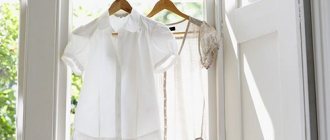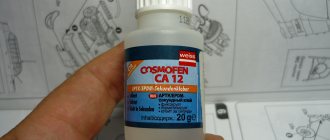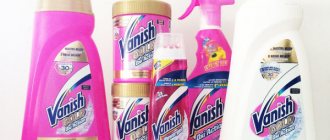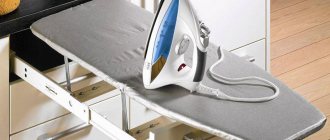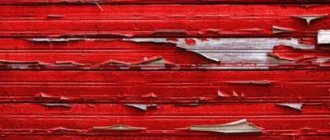There is a cutting board in any kitchen, and wood products have the most presentable and reliable appearance. Such boards are made from solid pieces of wood, cross cuts, small glued blocks or plywood: the latter option is the most inexpensive, but has a shorter service life.
Regardless of the manufacturing technology, the question remains relevant: how to treat a wooden cutting board so that it does not become unusable? Only special impregnations will help prevent cracking of utensils and the colonization of fungus and mold in the wood.
Why is processing needed?
Any production technology involves processing a cutting board. Every day the product is scratched with a knife or hammer. The wood is saturated with moisture, juices of berries and fruits.
Processing prevents:
- absorption of foreign wood odors;
- prevention of mechanical stress, chips, cracks;
- the appearance of bacteria from food debris;
- ingress of toxins into products;
- getting wet and swelling.
A new board must be washed in warm water, dried and oiled. The average service life of an item is up to 1 year. But with regular impregnation, it will last much longer, which will avoid unnecessary costs.
Turning a cutting board into an eye-catching decor
Inspired by the ideas in our gallery, you can create a product that will turn from ordinary household utensils into original decor for your kitchen. Such an expressive and functional piece of furniture will be a spectacular gift that no housewife will remain indifferent to.
join the discussion
Share with your friends
Almost every kitchen has a cutting board, and more than one. In order for a culinary attribute to serve for a long time, it needs care, and this does not only mean timely washing and drying. To process boards you need to purchase oil - regular impregnation guarantees their durability, strength and never-ending quality.
Only special oils are suitable for processing products: olive and sunflower will not do any good.
In the same way, vinegar, soda and other disinfectants (they have their own function) will not be useful for wood.
How to choose the right board material
Products are made from various materials:
- made of plywood - the most inexpensive and short-lived option (needs more careful maintenance);
- made of oak, pine, beech.
The coating of the tree depends on the type of wood.
When used correctly, any oil is suitable for impregnation. However, there are several recommendations in this matter:
- pine appliances containing linseed or nut oil will begin to emit an unpleasant odor after a while;
- it is advisable to purchase the same oil recommended by the manufacturer;
- mineral can be bought at a hardware store. If there is no such thing nearby, you can buy Vaseline at the pharmacy;
- oak objects are opened with a mixture of wax and mineral composition. The tree will absorb the required volume;
- For the end product, one tablespoon is enough.
How to evaluate the quality of mineral oil
To buy a truly worthwhile oil, you need to carefully read the instructions and clarify the following characteristics:
- Water resistance. A good product not only penetrates the pores, but also repels water even in direct contact with it. If moisture resistance is insufficient, the wood will continue to rot and the product will collapse.
- Environmental friendliness. The composition should not only not contain harmful components, but also must not release them when heated, be chemically inert, and not lead to the formation of dangerous compounds with components of household chemicals.
- Sufficient penetration. Some waxes and glazes have only a superficial effect, and the oil must penetrate into the structure of the wood.
- Colorlessness. A good oil does not change the color or grain of the wood, although if necessary, pigments can be added to it to tint the product.
- No smell. A high-quality product does not have any extraneous aromas, although some formulations contain certain fragrances.
Types of funds and selection rules
They are usually coated with synthetic and natural compositions. The only condition is the absence of toxic elements. The oil must withstand the high temperature of the water and not spoil.
Tips for choosing:
- thin plywood appliances are treated with natural impregnation;
- not all mineral compositions are suitable for the food industry;
- It is not advisable to treat pine accessories with flax composition due to the incompatibility of the materials.
Vegetable oils
Mainly treated with this oil:
- sunflower;
- olive;
- nutty;
- linen;
- sesame
It is worth noting that such compositions, without mixing with preservatives, deteriorate and a rancid taste and smell appear. The reason is the increased production of butyric acid bacteria. Some tips:
- plant compositions take a long time to dry;
- You should not use the product for 3 days after impregnation;
- can be replaced with drying oil to dry faster. Typically the products are not very durable.
Mineral oils
The best composition is mineral. Has a number of advantages:
- has no taste or smell;
- sold in any pharmacy and specialized kitchenware store;
- ability to absorb large volumes;
- reliable protection;
- giving a more aesthetic appearance;
- lack of color.
Popular mineral oils
The most popular compositions:
- “Hard Top Oil – 265” is an Italian product that is safe for health, durable and wear-resistant. Also applies to knife handles, weapon butts;
- “RuChet – 100” is an inexpensive Russian product that prevents the appearance of fungus, bacteria, and moisture. Knives can be lubricated;
- "Belinka - 135" - penetrates deeply into pores and gives a beautiful shine. Does not require frequent use.
Beeswax
Beeswax is a natural sealant.
Wax is a natural sealant that has an antiseptic and antifungal effect. You can use it alone or mix it with oil. This clogs large pores.
Wax creates a very strong protective layer. Its properties are superior to oil. It is able to completely cover all cracks and cracks.
Other means
There are 3 more oils for impregnation:
- coconut;
- cocoa;
- Vaseline.
The first 2 products have a high cost. The latter composition is inexpensive and can be bought at a pharmacy.
Final processing of wood with oil.
Preparing a wooden cutting board for use
Good day, dear readers of this blog!
How to prepare a wooden cutting board for use? How many people have asked this question?
My own experience and studying on the Internet very contradictory information on this issue prompted me to write this article.
Cutting boards are consumables. Their operating conditions are very harsh by definition. You can, of course, do nothing and immediately put the board to work. But it will not last long, 6-12 months. And some high-quality wooden boards are not cheap...
Many of you have heard and read that wooden utensils should be soaked in vegetable oil before use. Most often they recommend sunflower, olive, flax, palm, grape seed, hemp, teak and the like.
I want to warn everyone who wants to use this method!
Impregnating wood with vegetable oil is one of the oldest methods of processing it. This has been done from time immemorial, but this method has two significant drawbacks for a modern metropolis resident.
The fact is that vegetable oils
- dry for quite a long time and remain fluid, “staining” other objects with which they come into contact;
- the oil in the pores of the wood will go rancid, and the product will have a rich but unpleasant bouquet of odors that are almost impossible to get rid of.
So, to increase the service life, increase the stability of the board, protect against bacteria and give a beautiful appearance, it is recommended to treat cutting boards with mineral oil. Mineral oil is a product of petroleum refining and has neither taste nor smell.
You can buy mineral oil suitable for food purposes in stores that sell wooden cutting boards; I saw it at IKEA. But the most accessible mineral oil is sold in every pharmacy - this is Vaseline oil.
So let's get started! Wash the board and dry it. Run your hand over the board; if it seems rough, sand the board with fine sandpaper No. 600, 400.
Mineral oil should simply be poured onto the surface of the cutting board and rubbed over the entire surface with a soft cloth or hand. It is necessary to process all surfaces of the board, including the sides. Don’t be afraid to “overfill” the oil – the wood will absorb as much as it needs.
A new board must be treated several times (from two to five with a break of about 6 hours between treatments). Remove any oil that is not absorbed in the final layer with a paper towel.
Perhaps after the first layer of oil the wood fibers will rise. Go over them with fine sandpaper No. 600-400.
A more advanced and “long-lasting” method of treating boards is coating them with a mixture of petroleum jelly and beeswax. Prepare the mixture in a water bath: heat the Vaseline oil, put pieces of beeswax in it in the proportion of 1 part wax / 4 parts oil. Cool the mixture and apply it to the board on all sides with a brush or cloth, polish with a dry, clean cloth. You can buy natural wax from familiar beekeepers, in markets where they sell honey, in online stores that sell components for soap making and cosmetics.
Approximately 3 times a year, impregnation of the board with mineral oil must be repeated. Any wooden utensils can be processed in this way. Therefore, the oil you bought will not go to waste.
In conclusion, I would like to advise those who find the method I described difficult to use an innovation: simple flexible cutting boards made of silicone. They are light, non-slip, wash well, do not absorb odors, do not stain from the juice of fruits and vegetables, and do not dull knives. They are convenient to store - simply rolled into a tube. They are often called not boards, but cutting mats.
Silicone cutting mats are very convenient for preparing a wide variety of dishes; Ideal for rolling out and cutting dough.
Wash them with warm water and liquid detergent by hand with soft sponges; Do not use abrasive detergents. All silicone products can be washed in the dishwasher. They can withstand temperatures from -40 to +230 degrees.
How to properly impregnate
The product can be processed without much effort. Step-by-step instruction:
- The new board is covered with 3 layers. After each opening, wait until it is completely absorbed.
- Dry in a room with good ventilation.
- The old device must be sanded with sandpaper before processing.
- Dry from moisture.
- Using a napkin, apply the composition over the entire area and sides.
- Leave for 20 minutes.
- Wipe off the remains.
- Repeat after 12 hours.
- The procedure is done three times.
Vaseline and wax coating method:
- Heat the Vaseline composition.
- Place pieces of natural wax in it; there should be 4 times more Vaseline.
- Cool the mixture.
- Apply with a napkin.
Are other finishing compounds hazardous to health?
This question still causes heated debate, despite the fact that clear and authoritative answers have long been given to it. To finish wood products in contact with food, you can use any finishing compositions, including oil-based, polyurethane and nitrocellulose varnishes, shellac coatings and linseed oil. These materials are completely harmless to health, but only after complete drying. This is a very important point!
Before you start using any kitchen board that you decide to paint with one of these compounds, you need to make sure that the coating is completely cured. Remember that the presence of a surface film does not mean that the composition has completely dried inside the wood.
Adviсe
- To remove the smell of garlic, onions or fish, there are three simple ways: lemon, coarse salt and soda. Rub the surface of the board with something, wait a few minutes, wipe off the residue, rinse and dry the board.
- Always clean the board thoroughly after cutting fish, meat and game.
- While you are not using the board, keep it dry. Without moisture, bacteria die within a few hours. Moisture and liquids of any type should not remain on the surface of the board for a long time. If the board does not have legs and you store it horizontally on the countertop, always make sure that water does not accumulate under the board.
- Do not leave the cutting board near a heat source (stove, radiator) unless adequate insulation is installed. High temperatures are contraindicated for hardwood.
- Do not drill the board, gouge holes, or otherwise damage the surface without refinishing the wood.
- Don't use just one area of the cutting surface. Distribute the work across the board to ensure even wear.
- Do not use a sharpened cleaver - it may split the wood.
- Do not wash knives, forks and other utensils on the cutting board.
Recipes for oil soaks with herbs
For the most sophisticated who enjoy the constant search for something more, there are several recipes for oil infusions. They are made from different types of medicinal herbs and roots:
- Peppermint oil. Pre-dried mint needs to be ground well. The powder from dry leaves should be approximately 100g. Pour it into a glass bottle, add 0.5 liters of linseed oil, seal it and shake thoroughly. Let it sit for about 2 weeks. Don't forget to shake the infusion every day. Then we filter the resulting mint impregnation through cheesecloth.
- Oil with dandelion roots, or with angelica roots. The preparation procedure is the same as in the first option with mint, but in this case the roots of the plants are finely chopped and poured in the proportion of 1 part root to 5 parts oil.
- Collection of seven roots. This oil infusion is good for its strong concentration of tannins contained in plant roots. These substances remain in the oil, and when impregnated with wood, they perfectly strengthen its upper layers. We take burdock, dandelion, elecampane, cinquefoil, meadowsweet, and comfrey roots in equal proportions. The infusion process is exactly the same.
If you want to play around with color a little, you can try different edible vegetable oils. For example, pumpkin and sea buckthorn oils give a beautiful golden hue to a wooden product.
Practicality and durability
There are two main requirements for a wooden tabletop: it must be practical and durable.
Advantages of wood:
- Eco-friendly, safe to use and dispose of.
- Natural color enhances any interior.
- Pleasant tactile sensations from warm natural material.
- Ease of making different shapes.
- Never goes out of style.
- Natural wood fits into almost any kitchen style.
Flaws:
- Requires careful care.
- Easily damaged.
- Fire hazardous.
- Expensive.
- Heavy in weight.
The durability of a wooden tabletop depends on the source material and manufacturing method.
Hardwood trees are used. A tabletop made of oak or beech will last a long time. Surfaces made of ash, walnut, birch, and pine are more affordable. Many manufacturers prefer larch - an expensive but durable material.
Its features:
- dense wood;
- resistant to mechanical damage and stress;
- the composition contains gum - a natural antiseptic that protects against mold, mildew, and prevents the process of rotting;
- When temperature changes, it releases and absorbs moisture.
Solid surfaces are subject to curvature. Glued wood, that is, assembled from several plates, is as flexible and elastic as possible.
Practicality is due to resistance to moisture, temperature changes, and strength.
What oil should I use to treat wooden utensils?
Perhaps the most suitable for impregnating and protecting wooden utensils is linseed oil. ... Many people use regular flaxseed oil the old fashioned way (from a pharmacy or grocery store), spending a lot of time and effort to achieve a result that may not be satisfactory...
Interesting materials:
Where to find Wolfman The Witcher 3? Where are the souls of the dead before the Last Judgment? Where are the Andes and Cordillera mountains located? Where are New Zealand? Where are the presets for Lightroom? Where are the shells in GTA San Andreas? Where are the drawbridges in St. Petersburg? Where are the downloaded stickers on Viber? Where are the control buttons in the presentation? Where are all the fonts located?
Oil, wax or varnish
In order for a wooden tabletop to serve for a long time while maintaining an attractive appearance, it is covered with a protective layer. It saves it from moisture, aggressive detergents, extends its service life, and saturates the natural color.
Interesting! A popular color is Venetian oak.
Manufacturers of kitchen sets and woodworkers know how to process a wooden countertop in the kitchen. Three options are recommended: varnish, oil, wax.
Advantages of varnish coating:
- The wood pattern and rich color are better visible;
- several layers prevent surface destruction;
- protection from moisture;
- durability.
The varnish treatment is suitable for both the kitchen table and the countertop. Experts recommend polyurethane and acrylic varnishes.
When using them, table and tabletop:
- will retain its appearance for a long time;
- will withstand cold and hot dishes on its surface;
- will be reliably protected from contamination.
Oil
Special wood oil creates a water-repellent film on the surface. Oil products are made from plant, mineral and synthetic raw materials.
Depending on the drying process, they are divided into:
- Partially dry. Deeply impregnate the wood. The top layer is removed mechanically.
- Completely dry. A hard layer forms on the surface. It does not wash off with water.
Benefits of oil coating:
- highlights the natural color of wood;
- does not exfoliate;
- completely absorbed and does not flow at high temperatures;
- prevents the formation of fungus;
- does not cause harm to health when in contact with food;
- hides abrasions and minor scratches.
Wax is a good option for coating a wooden surface:
- makes the surface waterproof;
- prevents the appearance of mold and mildew;
- Withstands common kitchen detergents.
Care instructions
In order for a wooden tabletop to retain its appearance longer, it is necessary to properly care for it:
- The wood is wiped with mineral oil. It adds shine and prevents the growth of harmful microbes.
- Every day, remove any remaining water and food, first with a damp sponge, then wipe dry. To clean the countertop and wash dishes, use different sponges and rags.
- Hot dishes, iron containers with sharp edges at the bottom, heavy kitchen appliances are placed on stands.
Oil for countertops and work surfaces
Unlike glaze, oil for countertops and work surfaces is thicker due to the high content of solid plant waxes and resins. It is also not able to absorb well, but at the same time it is highly wear-resistant, reliably sealing the lower layers.
Wooden utensils or cutting boards treated with glaze and countertop oil, after complete polymerization, acquire 100% hydrophobicity, as well as high dirt and water repellent properties, are not afraid of high temperatures and do not enter into chemical reactions with food.



